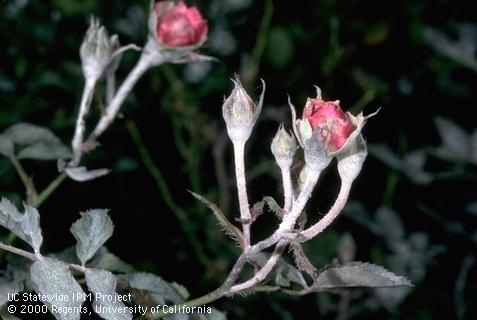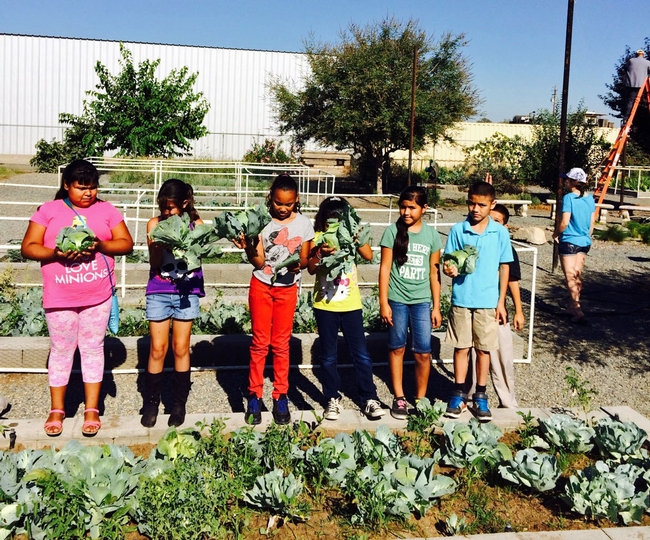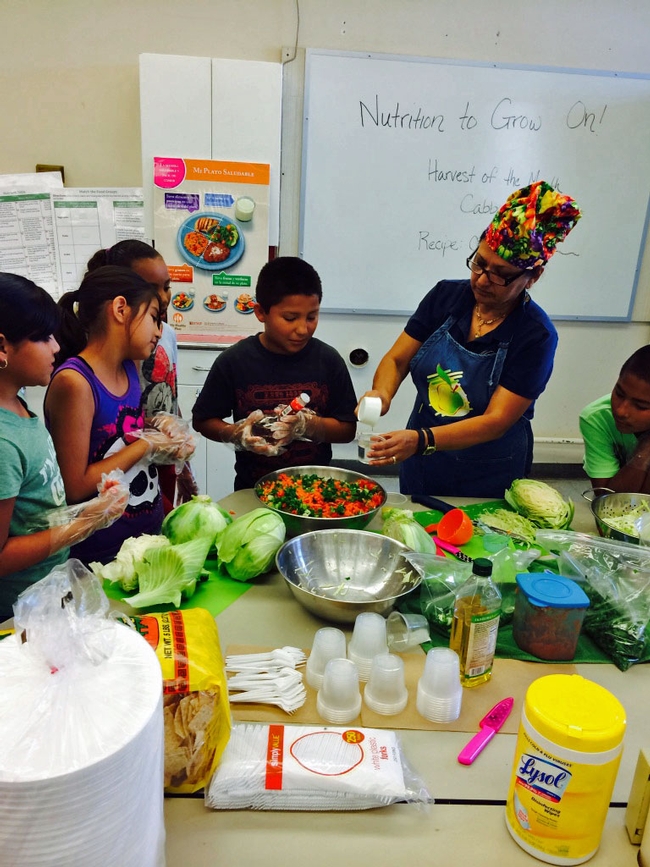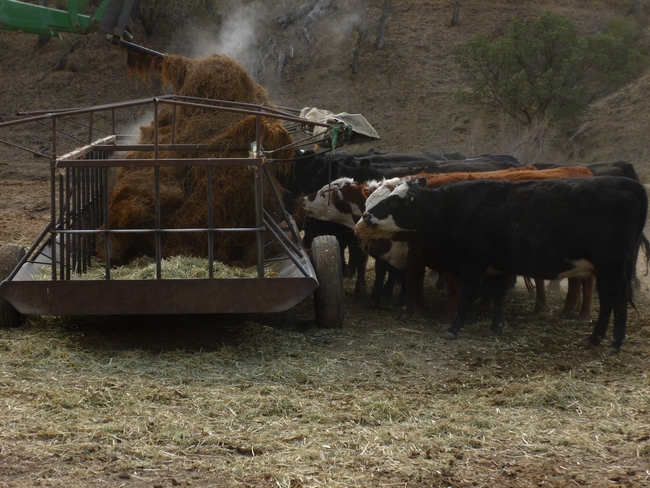UC Food and Agriculture Blogs
Growing healthy kids in a Pixley garden
An old proverb says it takes a village to raise a child. The teachers at Pixley Elementary School have found that it takes not just a village, but a unique combination of community agencies, good curricular materials and a little bit of dirt. That's right, dirt. In Pixley, they are growing healthy kids in a school garden.
A motivated third-grade teacher, Fidel Garcia, applied for grants from the Tulare County Farm Bureau, California Ag in the Classroom, the Dairy Council of California and LifeLab. He invited UC Cooperative Extension nutrition educator Grilda Gomez into the classroom to share the UC Cooperative Extension “Nutrition to grow on” lessons. A local nursery, Bonnie Plants, donated seeds and transplants to grow cabbage, zucchini and onions in the school garden.
Garcia asked the other Pixley Elementary third-grade teachers to be involved. David McGrady's class researched and planted herbs. Garcia's class and Ralph Gutierrez' class planted the main garden. All the students regularly visited to weed, irrigate and watch the vegetables grow.
At harvest time, UCCE's Gomez worked with the students to prepare a fresh coleslaw using vegetables representing the six plant parts they learned about in the classroom – stems, seeds, leaves flowers, fruit and roots.
Following is the recipe the third-graders prepared:
Crunchy coleslaw
8 cups finely shredded cabbage (2 ½ pound medium head)
1 cup finely sliced celery
½ cup shredded carrot (1 medium carrot)
½ cup sliced green onion
¼ cup chopped parsley
2 tablespoons salad oil
Pinch celery salt
¼ teaspoon black pepper
¼ cup wine vinegar
Directions:
Combine cabbage, celery, carrot, green onion and parsley. Pour on salad oil and toss until slaw is evenly coated. Sprinkle on and toss in seasonings. Finally, add wine vinegar and toss.
Summer Management for Fire Blight
We've been getting calls this summer from gardeners finding fire blight damage in backyards and landscapes. Fire blight is usually associated with wet springs. Although spring 2014 wasn't particularly wet, rain occurring when apples, pears, quince,...
Cooking with Fresh Herbs: 3 Flavors You’ll Want to Try!
One of the things I've really been enjoying lately is adding fresh herbs to my summer cooking. Herbs can take the flavor of any dish to the next level! They also marry well with a lot of the summer fruits and vegetables that you are...
Powdery mildew loves your garden, too!
Seeing white powdery growth on leaves and shoots in your garden or landscape? It's probably a sign that you have a common disease called powdery mildew. Powdery mildew occurs on many different plant species including fruits, vegetables and ornamentals,...

Powdery mildew, Sphaerotheca pannosa, on rose.
Win-win drought solution for livestock and rice producers
Innovation allows livestock producers and rice farmers to solve each other's problems
UC Cooperative Extension advisor Glenn Nader believes two problems could add up to one win-win solution.
The California drought has ranchers desperate for inexpensive livestock feed. Air quality protection regulations that limit rice straw burning leave the rice industry with an abundance of typically low-quality straw to unload. Though it has rarely been done, Nader believes special treatment of rice straw will make it a nutritious cattle food. Two problems solved.
Nader will introduce producers to this new way to get through the drought at a meeting from 9 a.m. to 12 noon July 29 at the Veterans Memorial Hall, 525 W. Sycamore St., Willows, Calif.
When rice straw dries, its value as a forage declines dramatically. For 15 years, UC researchers have been trying to figure out why, but the reason for the significant change is not understood at this time.
"At one time, we thought the problem was silica in the straw," Nader said. "We grew silica-free rice. That didn't work. We thought it was the crystallinity of molecules in the straw. We parsed apart the plant, and we still don't know."
Ultimately, it was a rancher who suggested the scientists to put aside their desire to know why quality declines when rice straw dries and look for practical ways to get around it. Nader postponed his retirement to comply.
Normally, rice growers bale the straw two to four days after harvest. Nader and his colleagues instead baled the straw immediately after it exited the grain harvester. They stacked the green straw bales and covered them with a tarp to retain moisture and prevent spontaneous combustion. The result is a product they named "strawlage." One worry is mold. The researchers found that treating the straw with propionic acid prevents fungus growth.
"We haven't figured everything out, but with the drought conditions as serious as they are, we feel the time is right to share our research with growers," Nader said. "We invite producers to come to the meeting to see if this will work for their operations. Several producers who have already fed strawlage to their cattle will speak at the meeting about their experiences."
Nader believes the UC research into using rice straw for livestock feed will be helpful throughout the world.
Asian farmers produce rice straw in great abundance and their livestock would benefit significantly if the farmers worked to maintain the plant's moisture until it reaches cattle feeding troughs.
The July 29 meeting will cover:
- Nutritional advantages of strawlage over rice straw
- The challenges of baling the straw at 50 to 60 percent moisture
- Additives to prevent mold
- How to stake and tarp strawlage
- The costs associated with the practice
- How cows that ate strawlage last year fared
"Our goal is to give producers information that will allow them to make rice strawlage during this fall's harvest," Nader said. "Both cattle and rice producers are encouraged to attend."





